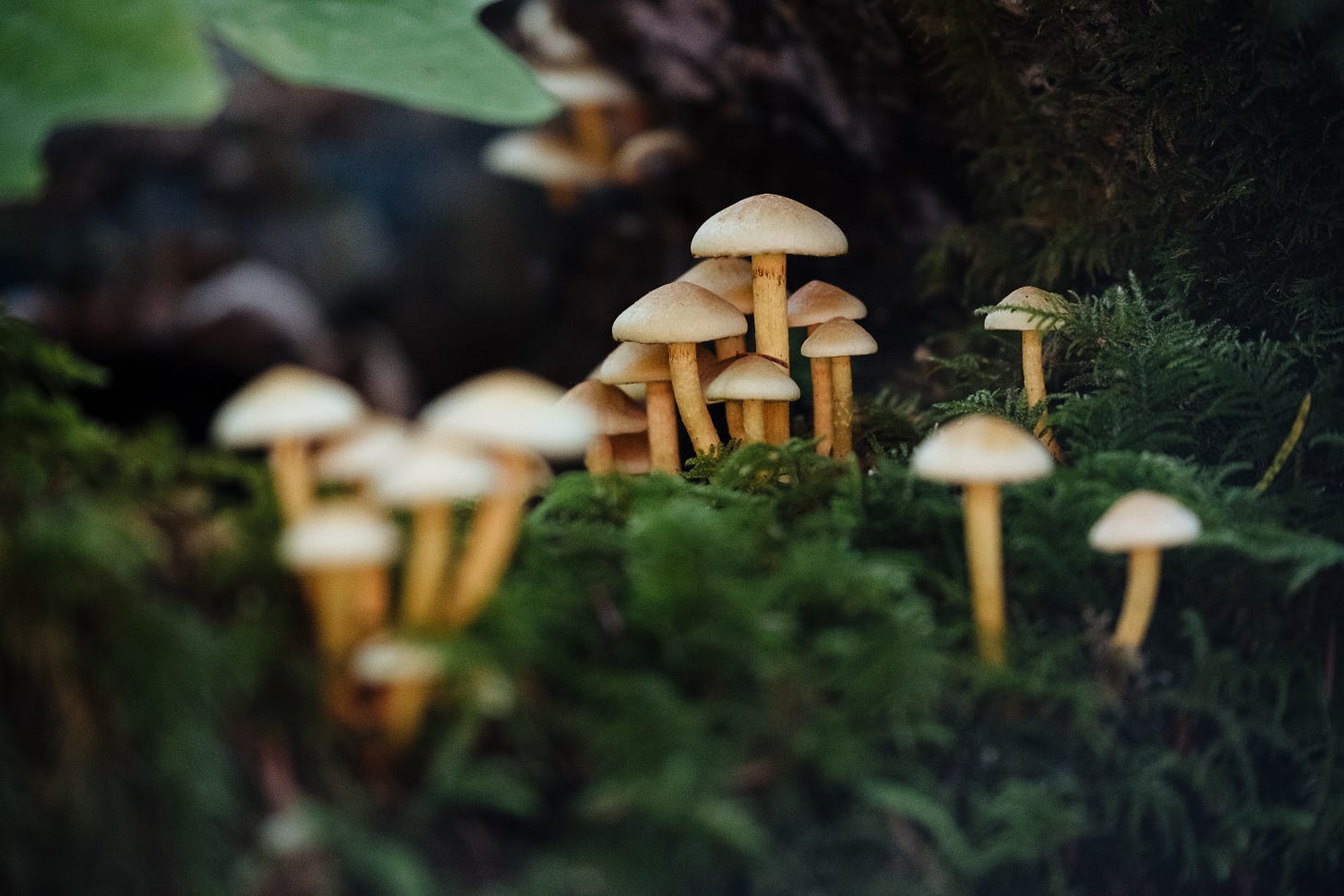Hiya!
So, you’ve probably noticed that I have a thing for plants. The more I learn about them, the more I’m convinced they’re much more alive than we assume. I mean, scientists pretty much all agree now that trees are social beings — they communicate with each other, warn of dangers, share nutrients, and much more.
It’s not just trees, though. Global warming lit a fire under scientists to understand the natural world before it’s too late. Humans have a reputation for believing we are unique and superior to all other living things. But what we’re discovering is both humbling and unbelievable. Because even the smallest, most seemingly insignificant life, such as fungi, shows it just might be more complex than we knew.
What Exactly is Fungi?
If we want to get technical about it, an organism that produces spores and feeds on organic matter is considered a fungus — and there are over 144,000 known species of them. Fungi (the plural term) include mildews, molds, mushrooms, etc.
At first glance, they seem inconsequential, maybe even gross, but the truth is they’re flipping awesome. To begin with, fungi aren’t plants, but they aren’t animals either. They exist as in-between with their own category called eukaryotes. Fungi live in all world regions, on and within plants and animals — including humans— and in our food, clothing, soil, water, and air. All in all, despite their small size, fungi play a significant role in nature. According to Britannica,
“Together with bacteria, fungi are responsible for breaking down organic matter and releasing carbon, oxygen, nitrogen, and phosphorus into the soil and the atmosphere.”
To put it simply, fungi are a recycling system for the planet. They reuse fire-altered organic matter, healing the ground after a forest fire so new life can take root. They also maintain the balance between nutrients and carbon in soil. Now scientists think fungi are capable of more, as evidence hints that at least some fungi may actually have language and speak similarly to the way we do.
Do Fungi Use Language to Communicate?
Curiosity struck Professor Andrew Adamatzky, who works at the Unconventional Computing Laboratory at the University of the West of England in Bristol, UK, while analyzing the electrical signals fungi seemingly emit toward each other. He wondered if perhaps the fungi were speaking to one another somehow, not just signaling information. Then he conducted a study to find out, which was published this week on April 6, 2022!
Adamatzky focused on four species of fungi for his study — the caterpillar, enoki, ghost, gill, and split fungi — and analyzed the patterns of electrical spikes made by each one. One of the first things he noticed was that each species had a distinct pattern of spiking characteristics.
He used chemical, mechanical, and optical stimulation and saw the fungi responded to the stimulus by changing the pattern of its electric activity and often even “modifying the characteristics of their spike trains.”
After further analysis, Adamatzky and his team noticed a similarity between the bursts of spiking in the trains and the spiking observed in our own central nervous system caused by the electrical pulses of our neurons. This alone is pretty remarkable, but Adamatzky took it a step further by comparing the fungal spiking train to a European languages sample text and “found that the ‘fungal language’ exceeds the European languages in morphological complexity.”
If these spike clusters, or trains, are some kind of language, then some fungi appear to have vocabularies of up to 50 words, but 15 to 20 words are used most common — based on their activity and patterns and because the distribution of their “word length” is similar to European languages.
Of course, as Adamatzky admits, “There is also another option – they are saying nothing.” He warns that “we should not expect quick results: we are yet to decipher the language of cats and dogs despite living with them for centuries, and research into electrical communication of fungi is in its pure infant stage.”
It’s possible fungi aren’t using language at all, but at the very least, his study offers results just intriguing enough to warrant further research.
Perspective Shift
He’s got a point. We’re well aware that animals of all kinds communicate using their form of language, from the cawing of birds and dogs barking to the stomachs rumblings between elephants. Yet, we’re nowhere near being able to translate what any animals are saying. So how could we interpret fungi’s electrical signals?
Regardless, the mere fact that we’ve arrived at a point where it’s not laughable that fungi might speak using their own language, is remarkable. Not twenty years ago, the idea would have been ridiculed. But now, it’s as though science is advancing faster than the discoveries can get around. Everything we thought we knew is being turned on its head. Who knows, maybe someday we’ll have a Google translate for plants, animals, and everything in between.
Just as a reminder, you’re currently reading my free newsletter Curious Adventure. If you’re itching for more, you’ll probably enjoy my other newsletter, Curious Life, which you’ve already received sneak peeks of on Monday mornings.
Any payments go toward helping me pay my bills so I can continue doing what I love — ethically following my curiosities and sharing what I learn with you.
You can find more of my writing on Medium. If you’re not a member but want to be, click here to sign up! Doing so allows you to read mine and thousands of other indie writers to your heart’s content.
Lastly, if you enjoy my work and want to show me support, you can donate to my Ko-fi page, where you can also commission me to investigate a curiosity of your own! Thank you for reading. I appreciate you.


